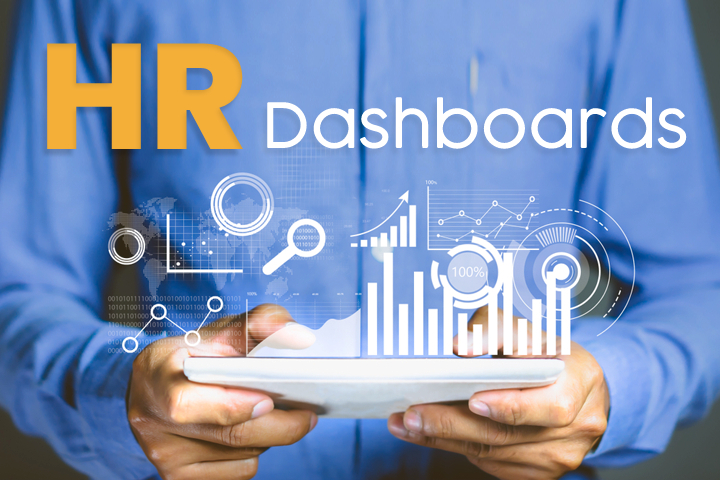Data, Data Everywhere, But No Insights Yet
Corporates generate much data on a daily basis that can include everything from data about performance of employees, payroll metrics, production figures, outage times, and just about any conceivable functions such as Sales and Marketing, Admin, HR, and the like.
Of particular interest to corporates, and that too in the services sector is data pertaining to employee recruitment, performance, training, and appraisal metrics.
Indeed, HR professionals these days use a variety of technical tools and software to generate data about each aspect of the HR function.
While there is a danger that this can lead to the HR Managers “drowning in data” without actionable insights from such data, there is also the added benefit of using such data for people analytics and HR Scorecard enabled Executive Dashboard. When data is used to sift through the individual and group performance analytics as well as compare peer performance, it allows HR Managers to identify Potential High Performers as well as weed out the laggards.
Similarly Dashboards enabled by HR Scorecard help Executives and the HR Departmental Heads to have a “Bird’s Eye View” of the overall input to output performance indicators.
How People Analytics Helps
Continuing on the terms and the points made so far, let us now visualize how People Analytics helps HR professionals as well as line and middle managers to make decisions regarding pay, rank, rating, and bonuses.
For instance, if a particular employee has done well or for that matter, very well during the Appraisal Period, the HR managers and the immediate managers can literally “see for themselves” such superlative performance in a “snapshot manner” where they can view the entire trajectory of the Employee’s time in the organization.
Apart from this, they can also “drill down” to specific metrics such as Productivity, Time Spent at Work, Break Times, and even, time spent on Facebook and Social Media including time spent on browsing the web.
Thus, it is a Double Benefit for executives seeking to rate an employee as they have access to ready data on each employee both at the Macro and the Micro levels.
This convenient access to data can also be used to justify good ratings and rationalize bad or poor ratings to peers as well as coworkers so that the organization can justifiably claim that their employee and people decisions are driven purely by data analysis.
Using the HR Scorecard with Technology
Having said that, as mentioned earlier, data without analysis or data lacking coherence is useless and pointless for corporates and their decision makers.
This is where AI or Artificial Intelligence powered analytics used in conjunction with the HR Scorecard is invaluable to decision makers.
As the HR Scorecard maps the outcomes against the objectives and the actual results against the targets, decision makers can asses for themselves how well they have done on a spectrum of parameters that include some of the ones discussed earlier, as well as other metrics such as industry and group and divisional comparisons.
Indeed, while HR Scorecard is valuable for such purposes by itself, when used in conjunction with technology, it becomes a powerful tool in the hands of corporates.
Moreover, in times when all employees at all levels are strapped for time, such Dashboards help not only the busy executives but also the senior and the middle managers.
Apart from this, data pertaining to attendance, time taken off due to sickness, time spent on CSR (Corporate Social Responsibility) activities and time spent on official entertainment activities provides a holistic overview of whether an employee is well rounded and hence, capable of managerial responsibilities.
Skills for HR Professionals When Using These Tools
This is the reason why many corporates these days are investing in tech enabled data and people analytics so that they can spare themselves the trouble of grinding data analysis and instead, let technology do it for them.
However, it is also the case that using tech for tech’s sake is pointless and it needs to be mentioned that the way one customizes and configures the software makes the difference as far as optimal use of tech is concerned.

In addition, data is meaningless unless we figure out a way to “make sense of it”. Further, such data analysis must be done in a manner that “does not reinvent the wheel” and instead, be innovative as far as generating information is concerned.
Moreover, the fact that HR Scorecard used with software has the ability to generate reports for use by Board Directors means that how the reports are generated makes the difference between presenting them with the proper information and just wasting their time.
Lest you feel that we are overemphasizing this point, we must draw your attention to the recent research which showed that large corporates and the Fortune 100/500 firms generate Terabytes of Data each day and hence, the importance of actionable and usable data cannot be underscored more.
Privacy, Security, and Confidential Data
Lastly, there is also the danger that such access to data on just about everything and anything raises the risk of confidentiality being breached or privacy jettisoned. In our careers, there used to be something called an “Employee File” which could only be accessed by two or three people including the particular employee. With the breakneck speed at which tech is being deployed, we must caution that concerns over privacy and confidentiality must not be sacrificed for convenience. Hence, with proper safeguards in place, we are confident that future HR managers would be able to both derive and add value from their jobs in leading corporates.







